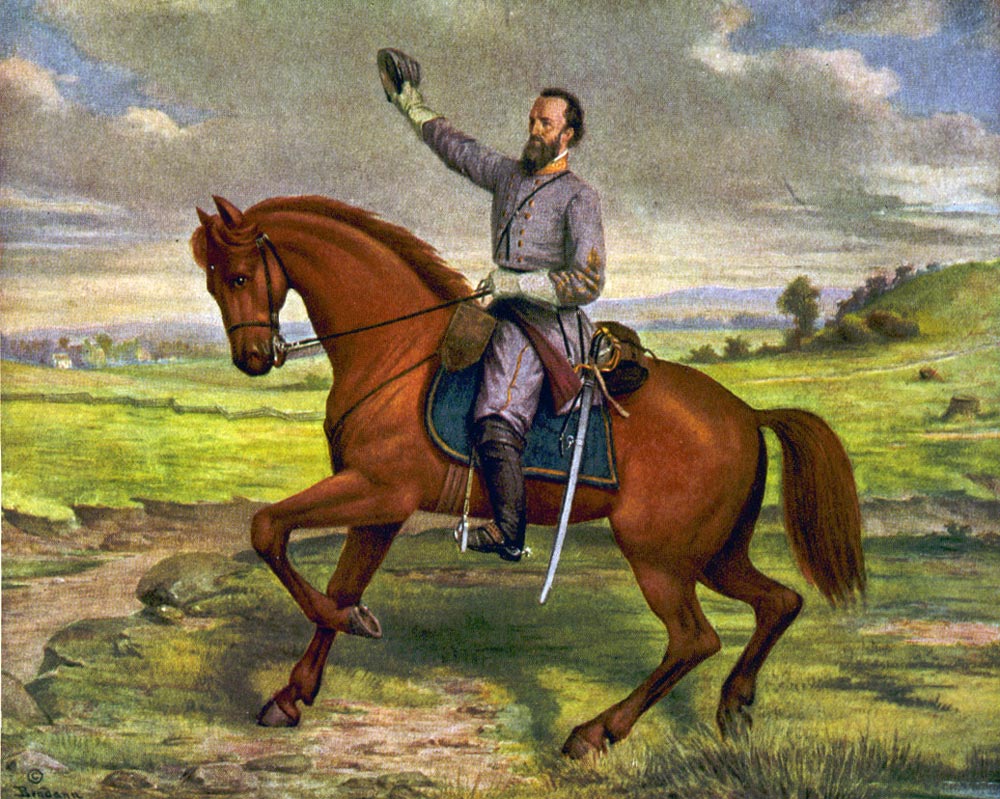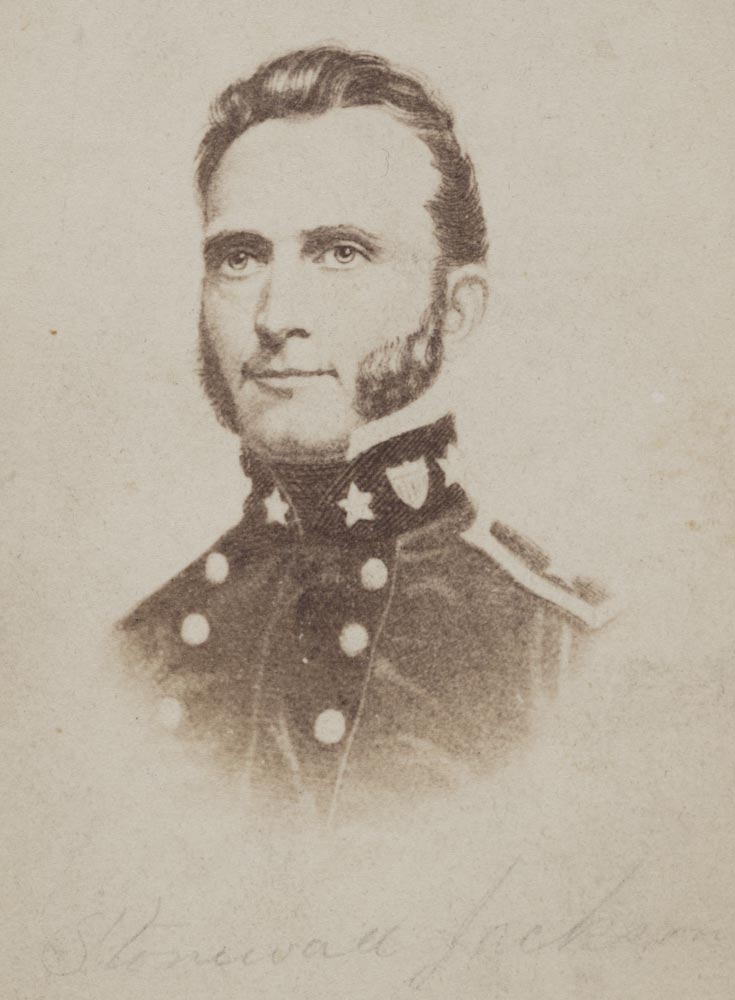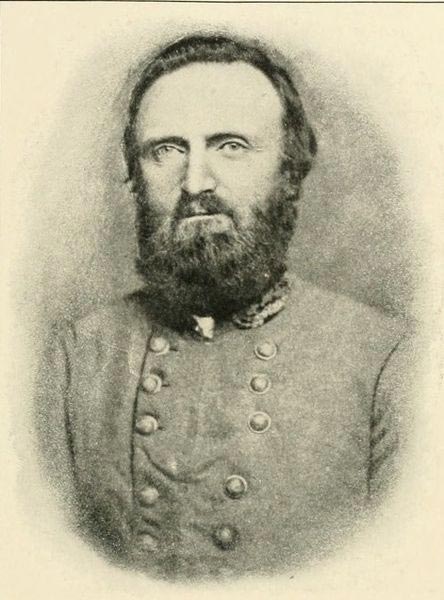| Thomas “Stonewall” Jackson | |
|---|---|
 |
|
| Born | Jan. 21, 1824 Clarksburg, Virginia (now West Virginia) |
| Died | May 10, 1863 (at age 39) Guinea Station, Virginia |
| Allegiance | United States Army Confederate States Army |
| Years | 1846–1851 (USA) 1861–1863 (CSA) |
| Rank | Brevet Major (USA) Lieutenant General (CSA) |
| Battles/wars | Mexican-American War American Civil War Great Train Raid of 1861 Battle of Falling Waters First Battle of Bull Run (First Manassas) Romney Expedition Jackson’s Valley Campaign First Battle of Kernstown Battle of Front Royal First Battle of Winchester Battle of Port Republic Seven Days Battles Battle of Gaines’s Mill Battle of Savage’s Station Battle of White Oak Swamp Battle of Malvern Hill Northern Virginia Campaign Battle of Cedar Mountain First Battle of Rappahannock Station Manassas Station Second Battle of Bull Run (Second Manassas) Battle of Chantilly Maryland Campaign Battle of Harpers Ferry Battle of Antietam Battle of Fredericksburg Battle of Chancellorsville |
Thomas “Stonewall” Jackson was a Confederate general serving during the Civil War. He was born on January 21, 1824, and was one of the famous Confederate commanders after General Robert Lee. “Stonewall” Jackson was the third-born child of Jonathan Jackson and Julia Beckwith. His parents were natives of Virginia. He attended West Point Military Academy in mid-1842, despite having poor childhood education, and graduated in 1846. After graduating, he was sent to Mexico as a Lieutenant just at the onset of the Mexican War. In the war, he won two brevets and was promoted to brevet major by the end of the war in 1848.
Stonewall’s Civilian Life
After the end of the Mexican War, Jackson continued to serve in military until 1851, when he accepted a professorship at the Virginia Military Institute. Here, he spent ten years as a professor of artillery tactics and natural philosophy. In 1853, Thomas “Stonewall” Jackson married his first wife Elinor Junkin, unfortunately she died 14 months later while giving birth. Jackson married his second wife, Mary Anna Morrison, in 1857 and they had a daughter the following year. Jackson faced another major mishap when his daughter died one month after being born. Julia Laura, the only surviving Jackson daughter was born a few months before the death of her father. Throughout his life, Jackson did not drink, nor did he smoke or gamble.
Service during the Civil War
 In the initial wave of secession from December 1860 to February 1861, Jackson expected that his home state, Virginia, would stay in the Union. However, after Virginia seceded in April 1861, he started to support the Confederacy. When the war finally broke out, he became a drill master for many new recruits in the Confederate army.
In the initial wave of secession from December 1860 to February 1861, Jackson expected that his home state, Virginia, would stay in the Union. However, after Virginia seceded in April 1861, he started to support the Confederacy. When the war finally broke out, he became a drill master for many new recruits in the Confederate army.
In April 1861, Virginia Governor ordered Jackson to be the commander at Harpers Ferry, where he was to command and assemble the legendary Stonewall Bridge. The Brigade consisted of 2nd, 4th, 5th, 27th and 33rd infantry regiments. On May 24, he raided the B&O Railroad and on June 17 he was promoted to brigadier general.
First Bull Run
At the First Battle of Bull Run in July 1861, Jackson became more prominent and earned his famous nickname “Stonewall”. He had rushed his men forward to close a gap in the defense line against an oncoming Union attack, when one of his fellow generals said that Jackson was standing like a stone wall. This comment spawned Jackson’s nickname. Jackson’s brigade managed to stop the Union assault, but suffered more casualties than other Southern brigades in that day. Thenceforth the brigade was known as Stonewall Brigade and Jackson was referred to as “Stonewall” Jackson. After the battle, he was promoted to the rank of major general on October 7, 1861 and became the commander of the Valley District.
The Shenandoah Campaign
 Thomas “Stonewall” Jackson led the Shenandoah Valley Campaign during the spring of 1862, where he established himself as an independent and strong commander. He was in charge of defending western Virginia against any attack by the Union troops. On the other hand, the Union army under Major General George McClellan approached Richmond from Southeast.
Thomas “Stonewall” Jackson led the Shenandoah Valley Campaign during the spring of 1862, where he established himself as an independent and strong commander. He was in charge of defending western Virginia against any attack by the Union troops. On the other hand, the Union army under Major General George McClellan approached Richmond from Southeast.
Union’s Major General Nathaniel Bank’s troops threatened the Shenandoah Valley, while General McDowell’s corps were to attack from the north. Jackson was ordered to prevent McDowell’s men from reinforcing McClellan and also defeat Bank’s threat. Stonewall Jackson had an army of about 18,000 men and was able to outmaneuver a powerful Union force of more than 60,000 men. Using his mobility to attack and confuse the Union troops, Jackson managed to win several key battles over troops of larger size. By the end of this campaign, he had become a great war hero in the South.
Peninsula Campaign
In June 1862, Jackson joined General Lee’s troops after the end of the Valley Campaign. The Confederate troops used a railroad tunnel under the Blue-Ridge-Mountains and then proceeded to Hanover County where they made a surprise appearance at Mechanicsville in front of McClellan. McClellan overestimated the numbers of the troops before him and decided to retreat many miles downstream; ending the Peninsula campaign. This also prolonged the war almost 3 more years.
Jackson’s troops played a big role at the Battle of Antietam, Second Battle of Bull Run, and the Battle of Fredericksburg. He also participated in the series battles referred to as the Seven Days Battle, but his performance there was poor. Stonewall Jackson had reached a rank of lieutenant general by October of 1862, and was commanding a noteworthy part of Lee’s army.
Jackson’s Last Battle
 The partnership between Jackson and Lee led to their most famous victory in May of 1863 at the Battle of Chancellorsville. Here, their army of 60,000 men faced a strong Union force of around 130,000 men. On May 2nd, Stonewall Jackson silently and quickly led 28,000 troops on a 15-mile march to Union General Joseph Hooker’s exposed flank, while General Lee employed diversionary attacks in the front. Jackson and his troops managed to inflict massive casualties on the Union Force, forcing Hooker to retreat after a few days.
The partnership between Jackson and Lee led to their most famous victory in May of 1863 at the Battle of Chancellorsville. Here, their army of 60,000 men faced a strong Union force of around 130,000 men. On May 2nd, Stonewall Jackson silently and quickly led 28,000 troops on a 15-mile march to Union General Joseph Hooker’s exposed flank, while General Lee employed diversionary attacks in the front. Jackson and his troops managed to inflict massive casualties on the Union Force, forcing Hooker to retreat after a few days.
Jackson’s attack ended at sunset, but the victory came at a cost. He had taken some of his troops into the forest to scout ahead. However, they were mistaken for enemy cavalry by a North Carolina regiment who immediately opened fire on spotting them and wounded Jackson severely. He was taken from the battlefield and General J. B. Stuart took the command. The bullet had shattered the bone below his left shoulder, and the doctors quickly amputated the left arm.
Afterwards, he was transferred to a hospital at a nearby plantation to allow him to recover. Despite initial signs of recovery, Thomas “Stonewall” Jackson died on May 10, 1863 from Pneumonia. His death was mourned by the southerners, and left General Lee’s troops without a highly valued comrade and general.
In conclusion, Jackson’s unusual command-style, personality traits and frequent success in battles led to his reputation as one of the most outstanding generals of the Civil War. Despite his eccentricities, his soldiers respected and loved him very much. Thomas “Stonewall” Jackson was religious too, and observed the Sabbath. In fact he did not like fighting on Sundays, but that did not prevent him from fighting whenever necessary.